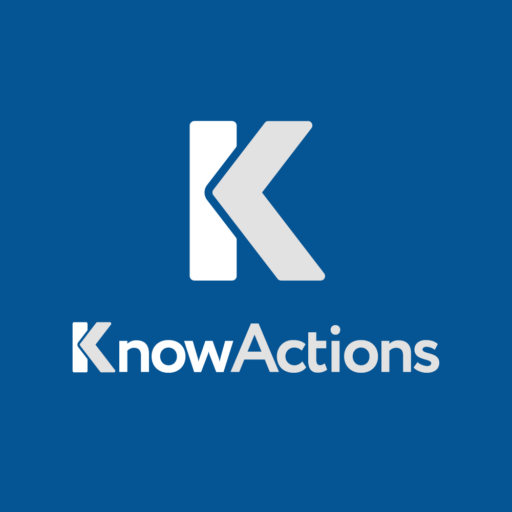Did you know that only about 50% of meeting time is deemed productive, as per studies1? This fact highlights the pressing need for effective action tracking in today’s business world. Post-pandemic, one-on-one chats have skyrocketed by 1,230%, while group meetings have seen a 613% increase, underscoring the critical role of efficient meeting management1.
Meeting Action Tracking has emerged as a vital tool for organizations aiming to enhance productivity and ensure that discussions lead to concrete results. By adopting robust Action Item Tracking systems, teams can close the gap between planning and execution. This transformation turns unproductive meetings into drivers of progress.
Meeting Productivity Tools have evolved to tackle these issues, offering features like virtual whiteboards, polling tools, and synchronized digital calendars for global teams1. These innovations, combined with strategic meeting management approaches, can greatly boost the effectiveness of team collaborations.
To boost post-meeting productivity, it’s vital to conclude each meeting with clear next steps and assigned action items1. Platforms like Bluedot automate meeting processes, including recording, generating transcripts, and facilitating collaboration on notes, thus simplifying the action tracking process2.
Key Takeaways
- Only half of meeting time is typically productive
- Virtual meetings have increased exponentially since the pandemic
- Action tracking is essential for post-meeting productivity
- Modern tools can significantly enhance meeting efficiency
- Clear action items and follow-ups are crucial for meeting success
- Automated platforms can streamline the action tracking process
The Importance of Post-Meeting Action Tracking
Post-meeting action tracking is vital for effective Meeting Minutes Management. It turns discussions into real outcomes, boosting team productivity and project success. High-performing companies, with 64% of them, focus on this key aspect3.
Defining Action Items in Meetings
Action items are specific, time-bound tasks given to team members. They connect ideas with action, making sure meetings lead to real results. Clear action items boost the chance of completing tasks, promoting accountability4.
The Impact on Team Productivity
Good Task Assignment Tracking increases team productivity in many ways. It improves time management by setting clear deadlines, enhances communication with regular updates, and allows tracking progress. Companies with strong accountability cultures are 2.5 times more likely to excel34.
Bridging the Gap Between Discussion and Implementation
Accountability Monitoring is crucial in making sure meeting discussions lead to action. Assigning ratings to action items helps teams focus on what’s important. Tools like project management software or spreadsheets keep track of progress efficiently. Regular reviews with checklists or dashboards ensure action items get done5.
Teams that work well together are five times more likely to perform well, highlighting the need for structured action tracking3. Breaking projects into smaller tasks and assigning clear roles helps organizations increase productivity and achieve success.
Meeting Action Tracking: Core Principles and Benefits
Action Item Ownership and Agenda Follow-up are key to effective meeting action tracking. They ensure tasks are well-defined, assigned, and finished on schedule. Effective note-taking during meetings is vital for accurately capturing action items.
The core principles of meeting action tracking focus on the 3W framework: Who, What, and When. This method guarantees clarity and completeness in a concise sentence. Action items should have a title, tracking number, priority level, due dates, and a brief description. These details help in managing workload and executing projects6.
Strong action tracking offers many benefits. It boosts organization, increases productivity, and enhances accountability. Teams can prioritize tasks effectively, ensuring nothing is overlooked. Research indicates that nearly half of tasks on to-do lists remain uncompleted, leading to stress. Proper tracking can alleviate this problem7.
“Action items allow project managers to track projects accurately and share progress with stakeholders, turning project meetings into actionable tasks.”
Using a rolling action item list helps in tracking responsibilities and evaluating task success over a project’s lifecycle. This method offers valuable insights into team performance and project progress over time6.
| Key Attributes | Benefits |
|---|---|
| Description | Clarity of task |
| Due Date | Timely completion |
| Owner/Assigned to | Accountability |
| Status | Progress tracking |
| Creation Date | Timeline management |
| Priority | Effective resource allocation |
By adopting these principles and the benefits of action tracking, teams can greatly improve their productivity and project success rates after meetings.
Establishing Clear Objectives and Agendas
Setting clear objectives and creating comprehensive agendas are vital for effective Meeting Action Tracking. A well-designed agenda can enhance meeting efficiency by up to 50%, aligning expectations for over 70% of participants8. This method ensures each meeting has a clear purpose, facilitating productive discussions and actionable outcomes.
Setting Specific Meeting Goals
Defining clear goals is the cornerstone of successful meetings. When objectives are clearly outlined, discussions become more focused, leading to better outcomes. In fact, meetings with clear agendas are 65% more likely to meet their objectives8. This clarity aids in Task Assignment Tracking, ensuring every team member knows their role and responsibilities.
Creating Comprehensive Agendas
A detailed agenda acts as a roadmap for an effective session. It should detail topics, purposes, and discussion leaders. Including time estimates for each agenda item can reduce meeting overruns by 40%8. This method boosts Meeting Action Tracking by keeping discussions on track and ensuring all crucial topics are addressed.
![]()
Prioritizing Discussion Topics
Prioritizing agenda items based on their complexity and importance is crucial for effective time management. Assigning topic facilitators for each agenda item enhances meeting effectiveness by guiding discussions and ensuring all voices are heard9. This approach leads to more focused conversations and enhances Task Assignment Tracking.
| Agenda Element | Impact on Meeting Efficiency |
|---|---|
| Clear Objectives | 65% increase in goal accomplishment |
| Time Estimates | 40% reduction in meeting overruns |
| Topic Facilitators | Enhanced discussion guidance and participation |
By adopting these strategies, teams can significantly enhance their Meeting Action Tracking and Task Assignment Tracking processes. Sharing the agenda in advance with all participants fosters better preparation and alignment, leading to more effective and productive meetings9.
Effective Note-Taking Strategies for Action Item Capture
Mastering note-taking techniques is essential for effective Meeting Minutes Management and Action Item Tracking. The Cornell Method, with its five-step approach of Record, Reduce, Recite, Reflect, and Review, offers a structured way to capture meeting essentials10. For those who prefer a more visual approach, the Quadrant Method divides notes into four sections: Questions, Ideas, Personal to-dos, and Assigned tasks10.
Effective meeting notes provide clarity on important discussions and decisions, benefiting stakeholders who couldn’t attend11. They also help in recalling decisions and maintaining team accountability11. To enhance your note-taking skills, consider these strategies:
- Focus on key components: agenda items, action items, ideas, decisions, and takeaways
- Prepare beforehand and practice active listening during the meeting
- Use organized documentation for clear, actionable content
- Consider handwriting notes for better long-term retention of conceptual information
Remember, transcribing conversations verbatim is inefficient and unnecessary for effective note-taking11. Instead, concentrate on capturing the essence of discussions and clearly defining action items with assigned responsibilities and deadlines.
Leveraging technology can streamline the note-taking process. Tools like Otter, ReWatch, Fireflies, and Rev can assist in capturing and organizing meeting information10. However, it’s essential to make notes accessible to team members and clients using modern collaboration tools, turning them into engaging resources for future reference10.
By implementing these strategies, you’ll enhance your Meeting Minutes Management and Action Item Tracking, ensuring that important ideas and tasks don’t get lost in the shuffle of busy workdays.
Leveraging Technology for Streamlined Action Tracking
In today’s fast-paced work environment, technology is key to boosting team productivity and efficiency. Tools like Meeting Workflow Automation and Action Tracking Software are vital for streamlining operations and enhancing collaboration12.
AI-Powered Meeting Transcription Tools
AI-powered transcription tools have changed how teams capture and process meeting information. They automatically produce accurate transcripts, summaries, and pinpoint action items. This saves time and lowers the chance of missing crucial tasks13.
Project Management Software Integration
Linking project management software with action tracking systems makes task assignment and progress tracking seamless. Tools like Asana, Trello, and Teamwork provide customizable task lists and real-time updates. This boosts overall project management efficiency12.
Automated Action Item Identification
Advanced Action Tracking Software can automatically spot and extract action items from meeting transcripts. This ensures crucial tasks aren’t missed and keeps teams on track with their objectives14.
| Technology | Benefits | Examples |
|---|---|---|
| AI Transcription | Accurate meeting summaries, time-saving | Otter.ai, Fireflies.ai |
| Project Management | Task assignment, progress tracking | Asana, Trello, Teamwork |
| Action Tracking | Automated item identification, accountability | Jira, Monday.com |
By using these technological solutions, teams can greatly enhance their action tracking processes. This leads to increased productivity and better collaboration, especially in hybrid work settings13.
Assigning Responsibility and Setting Deadlines
Effective Action Item Ownership and Task Assignment Tracking are key to success. A staggering 80% of productive meetings rely on well-executed action items to justify the time and energy invested15. This highlights the need for clear responsibility allocation and setting deadlines.
When assigning tasks, consider team members’ skills and current workloads. Communicate expectations clearly and provide necessary resources. Studies indicate that 75% of tasks assigned and tracked in a central hub lead to improved team productivity and accountability15.

To enhance accountability, documenting who is responsible for each task and its deadline in meeting minutes is crucial. This serves as an official record for future reference and evaluation. Setting reminders for action items and promptly distributing notes ensures deadlines are met and keeps discussion topics fresh in participants’ minds16.
Designating an action item manager can be beneficial. This role oversees task completion, ensuring participants stay on track with their deadlines. Using collaborative work management tools for note-taking and storage can boost transparency and efficiency in information sharing and tracking16.
| Key Elements | Percentage | Impact |
|---|---|---|
| Well-executed action items | 80% | Meeting success |
| Tasks assigned in central hub | 75% | Improved productivity |
| Clear task documentation | 60% | Effective meeting management |
| Comprehensive action items | 45% | Enhanced task clarity |
By implementing these strategies, teams can significantly improve their Action Item Ownership and Task Assignment Tracking processes. This leads to more productive meetings and successful project outcomes.
Implementing a Follow-Up System for Action Items
A robust follow-up system is essential to prevent action items from being overlooked. By integrating effective accountability monitoring and meeting workflow automation, teams can significantly enhance their productivity and project success rates.
Regular Progress Check-Ins
Regular check-ins ensure tasks remain on schedule and help identify potential hurdles early. These sessions foster accountability within the team, keeping everyone in sync with their tasks and goals17. By making action items transparent and assigning specific names, teams are more likely to complete them18.
Automated Reminders and Notifications
Utilizing meeting workflow automation tools simplifies the process of assigning, visualizing, and prioritizing action items. These tools send automated reminders and notifications, ensuring team members meet deadlines and minimizing redundant communication17.
Tracking Completion Rates and Timelines
Monitoring completion rates and timelines offers crucial insights for enhancing team performance and project management. Documenting and checking off action items facilitates clear progress tracking and optimizes daily operations18. This information is invaluable for referencing past projects, understanding previous workflows, and monitoring project advancement.
| Action Item Component | Description | Importance |
|---|---|---|
| Task Description | Clear, specific task details | Provides clarity and avoids misunderstandings |
| Responsibility Assignment | Designated task owner | Ensures accountability and efficient completion |
| Due Date | Specific completion deadline | Creates urgency and helps manage workload |
| Priority Level | Task importance indicator | Guides focus and efficient task completion |
By integrating these elements into your action item tracking system, you can significantly boost accountability monitoring and team productivity1718.
Measuring and Improving Action Item Completion Rates
Tracking action item completion rates is vital for boosting team performance and project advancement. Organizations that embrace data-driven meeting cultures are 19 times more likely to thrive financially. This underscores the significance of making decisions efficiently19. By employing Meeting Productivity Tools, teams can uncover valuable insights into their workflow and pinpoint areas for enhancement.
Action Tracking Software delivers in-depth analytics on task completion rates, the time tasks take to finish, and how outcomes align with organizational goals20. This information empowers managers to streamline processes, rebalance workloads, and provide tailored support to team members. Regular reviews of action items foster a culture of focus and accountability, crucial for sustaining momentum21.
- Set clear and achievable goals for each action item
- Assign responsibilities and deadlines using AI-powered task management systems
- Implement automated reminders and progress tracking
- Conduct regular team check-ins to address challenges and provide support
- Use data analytics tools to monitor meeting effectiveness and identify bottlenecks
By focusing on these areas, teams can significantly boost their productivity. AI-powered task management systems can save employees up to six hours weekly, making time and resources more efficient21. Moreover, integrating AI with project management platforms facilitates effective task tracking, progress monitoring, and deadline adherence20.
| Metric | Impact on Productivity | Improvement Strategy |
|---|---|---|
| Action Item Clarity | Reduces errors and accelerates completion | Use AI tools to extract precise action items |
| Task Completion Rate | Indicates workflow efficiency | Implement automated progress tracking |
| Time to Complete Tasks | Reflects resource allocation | Adjust workloads based on analytics |
| Team Engagement | Fosters collaboration and accountability | Conduct regular action item audits |
By consistently measuring and refining action item completion rates, organizations can refine their meeting practices, boost productivity, and achieve superior business outcomes. The adoption of data-driven strategies and AI-powered tools is pivotal in creating a more engaged and efficient workforce.
Conclusion: Maximizing Post-Meeting Productivity Through Effective Action Tracking
Effective meeting action tracking is key to boosting post-meeting productivity. It ensures clear processes for identifying, assigning, and tracking action items. This method greatly enhances the chance of meeting goals22.
With the shift to remote work, virtual meetings have become crucial for today’s businesses. Tools like video conferencing and collaboration software are vital for these virtual meetings. They make it easier for teams to share ideas and work together efficiently23.
To boost post-meeting productivity, focus on strategies for accountability and follow-ups. Use tools for summarizing meetings, assigning tasks, setting deadlines, and tracking progress. These practices help teams complete tasks and succeed in projects22.
As work evolves, it’s important to keep improving action tracking processes. By using the right tools and promoting accountability, organizations can keep meetings productive and meaningful. This leads to success in the digital era2223.




